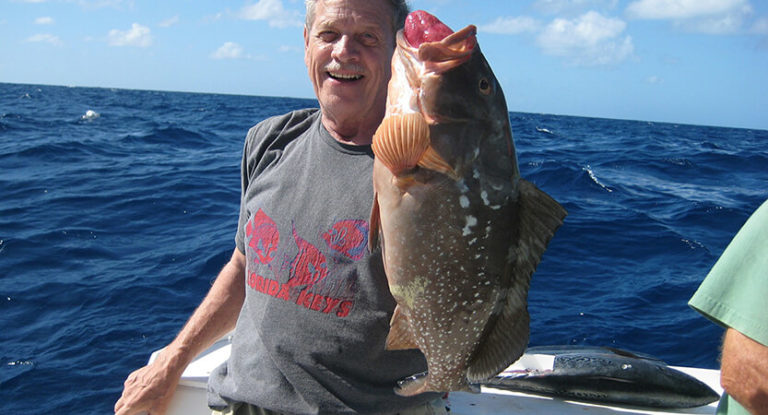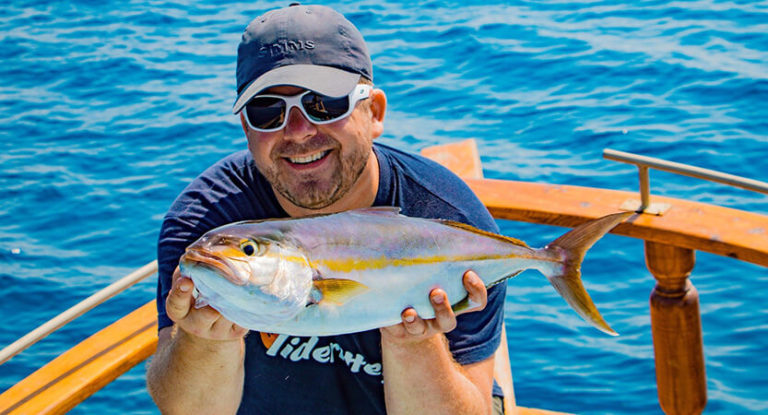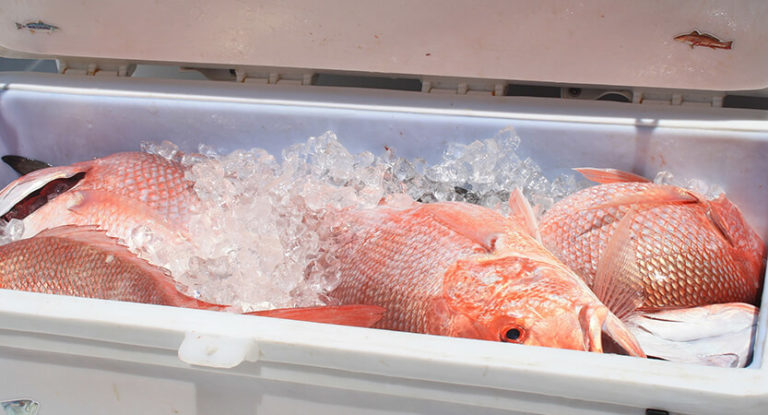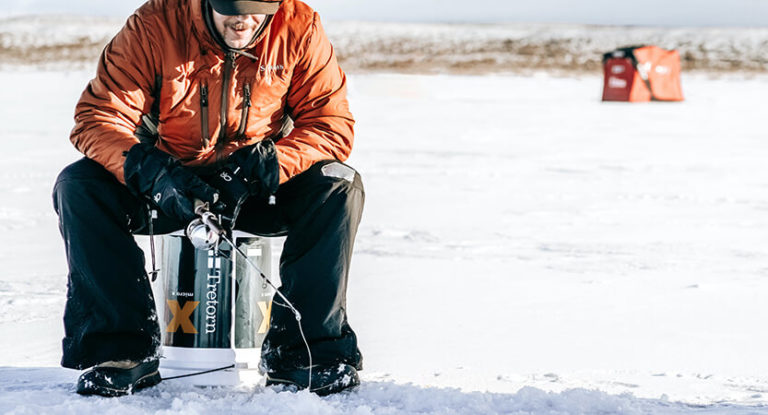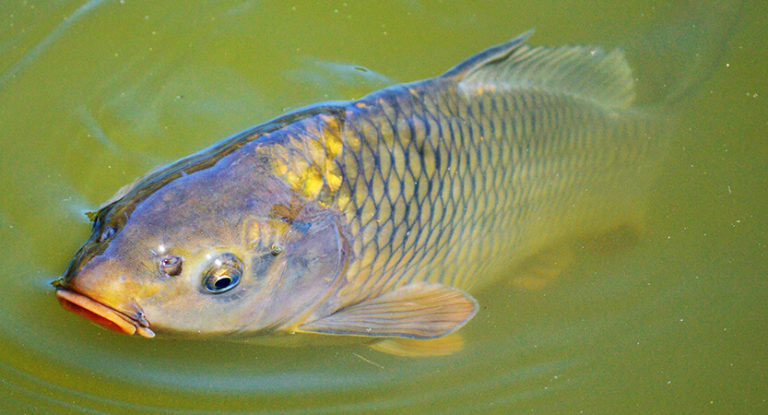Fishing is full of all sorts of tricks that are revealed gradually, with the acquisition of experience. It would seem that the simplest task is to reel the fishing line on a reel, and how many subtleties this seemingly simple process conceals in itself! People who only comprehend the mysteries of fishing do not even suspect how important this “trifle” can become. Incorrectly laid thread can fall off, twist and form “beards”, which can make fishing not only uncomfortable, but also impossible in principle.
Today we will figure out how to correctly calculate the amount of working thread or cord, find out what backing is and learn the intricacies of laying fishing line on spools of various types. We hope this post will contribute to your advancement in the art of fishing. Let fishing bring pleasure and enviable catches, and improperly laid fishing line does not interfere with this!
Here is an overview of the content of this tutorial, feel free to jump to any section you care about:
For more fishing instructions, take a look at these popular Trizily links: Best Spinning Rods, Best Spinning Reels.
- What Is A Clutch On A Fishing Reel
- How To Choose A Spinning Reel (Complete Guide)
- How To Choose A Spinning Rod (Complete Guide)
Choosing a reel and line
The first task of the angler is to acquire quality fishing line. Modern spinners and feeders rarely use traditional monofilament because of its extensibility in water, which is especially noticeable at long distances. They prefer braided cords , which are less prone to deformation and show similar strength at half the diameter. The exception is the use of monofilament in tandem with a spinning spoon , but for jig , braid is definitely preferable.
Spinning rods and feeders, in the overwhelming majority of cases, are equipped with spinning reels with line guides. The exceptions are old school lovers (inertial models) and anglers who use multiplier options for hunting trophy specimens. Regardless of the design, with a high-quality design of the spool and other structural elements, winding the line is greatly facilitated.
Monofilament in combination with the classic inertia and spinning reels is used mainly for float and nod fishing rods, bottom tackle and girders. In this case, a different winding principle is used.
Determining the length of the line and backing
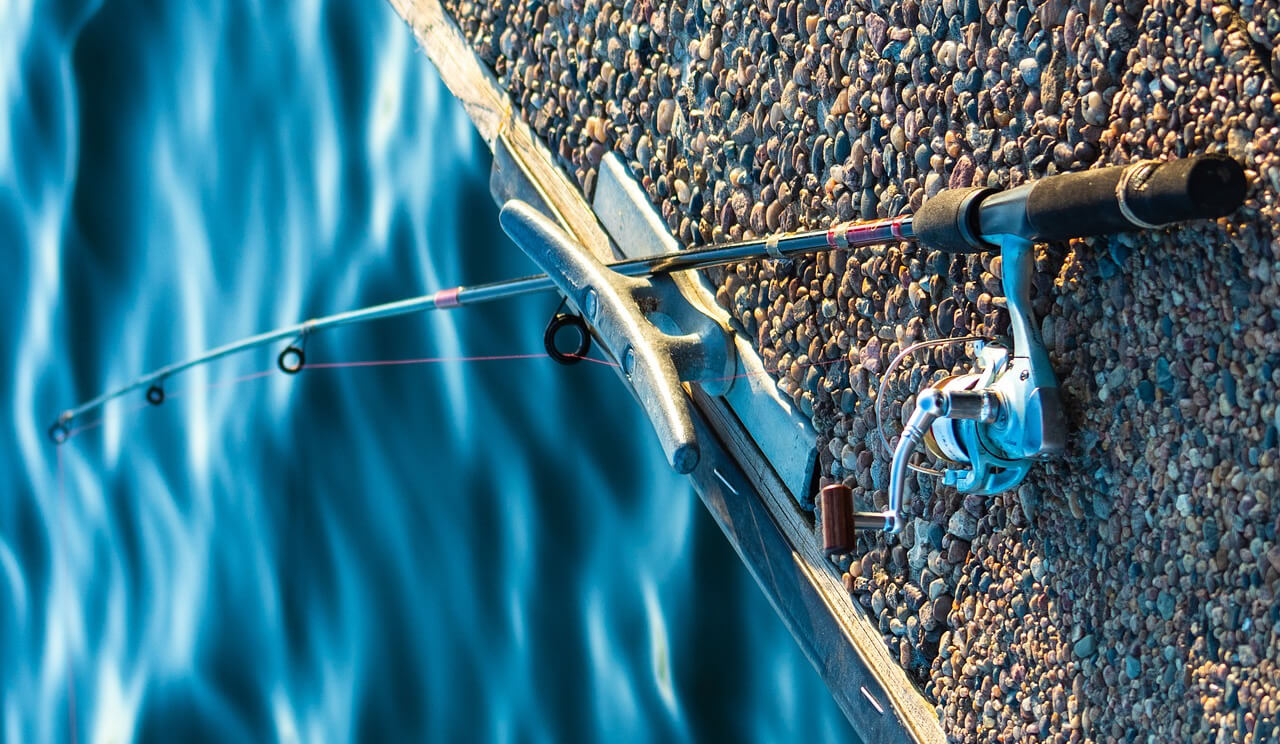
On spools issued by reputable manufacturers, their capacity is indicated, that is, how many meters of thread of a certain thickness they can hold. The currently accepted classification is from Shimano. The lightest and smallest is the model marked “1000” (this figure comes from the product of the diameter of the fishing line by its length in millimeters), which is used for spinning “ultralight”.
The most common variant is marked “3000” for middle class rods, which are rightfully considered the most versatile. By simple calculations, you can understand that the spool of such a model will fit 100 meters of line with a diameter of 0.3 mm. However, such a thick line is not always necessary, especially when it comes to braiding. We take half the value and we get 200 meters of expensive high-quality cord, which, with intensive use, may not withstand a full season.
In order to save money (by the way, quite justified), many anglers reel on the reel exactly as much working line as is needed to achieve the maximum casting distance. However, for fishing efficiency and comfort, it is necessary that the reel is almost completely full. A distance of a couple of millimeters from the edge of the spool is still acceptable, but then problems begin.
If you do not want to incur unnecessary costs, we recommend using backing , that is, auxiliary filling of the spool. Usually, inexpensive monofilament of small diameter is used as backing. It is better not to use a thick monofilament: it gives unwanted height differences. If you wish, you can use last year’s cord as a basis, which has lost some of its valuable properties and is no longer suitable as a main line. Another option – to wrap the spool with electrical tape – should be used only in extreme cases: it is not the most convenient way, and it is problematic to achieve perfect winding.
How do you determine the amount of backing and line you need? Do not measure them with a ruler, after all! Ideally, it is better to use a special line counter, mechanical or electronic – these devices are usually inexpensive and make life much easier for the angler. Advanced models attach directly to the rod and improve casting accuracy, which is especially important for feeder fishing . So you definitely won’t have to regret the money spent on purchasing this handy “gadget”.
The second option for winding the line is more cumbersome. You need two reel spools of the same capacity. First we wind a working cord on one of them (there is always much less of it), then backing, until the spool is filled. Then we rewind to the second spool, and the backing is in the place intended for it – below, under the main cord.
Winding profile
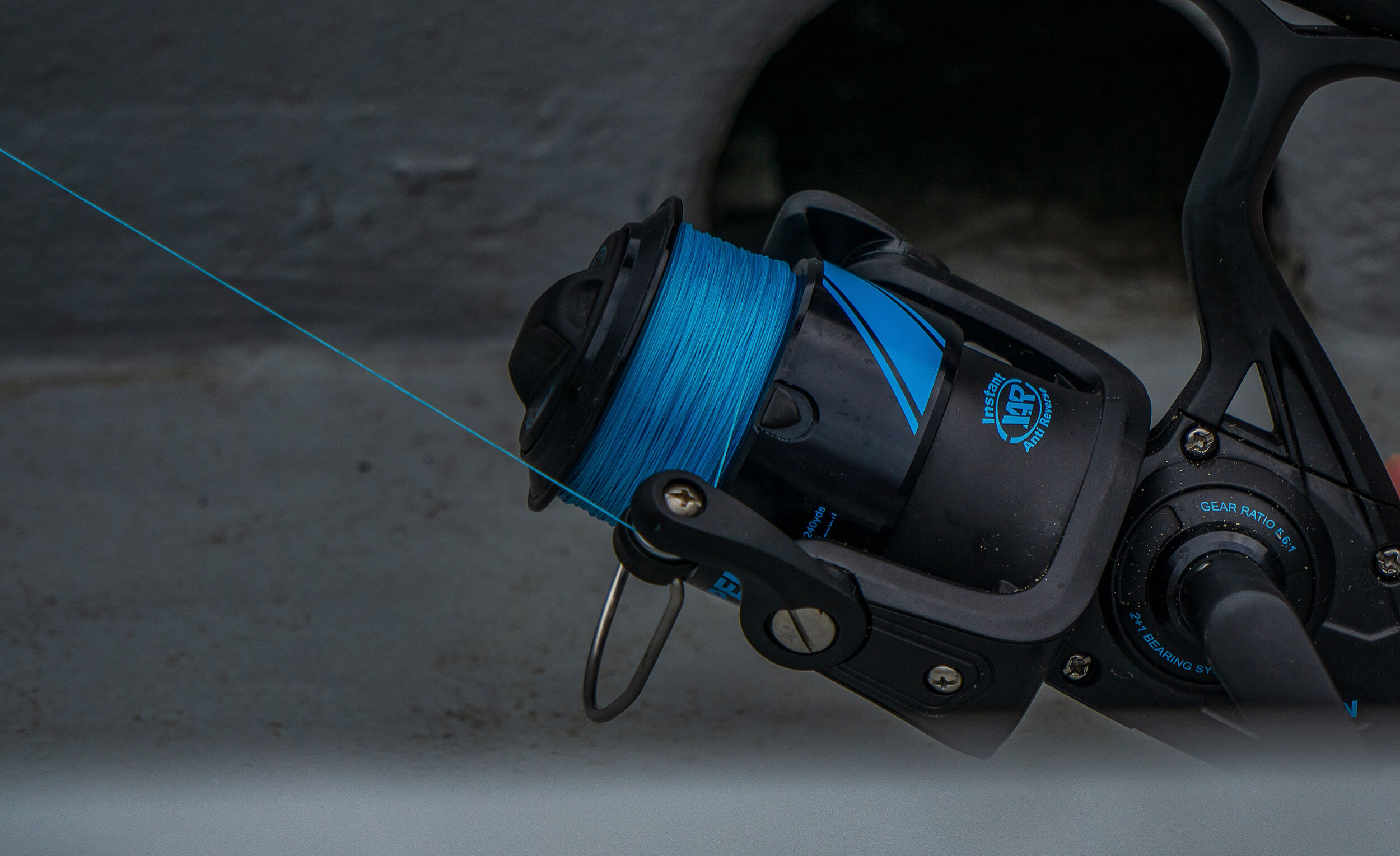
When wound correctly, the cord will lay in accordance with the profile of the spool. The following types of profiles are distinguished:
- Cylindrical . The profile winding is distributed evenly throughout the bobbin. The result is the correct cylinder.
- Straight tapered . Near the front side, the winding is minimal in diameter, the profile grows gradually towards the back side.
- Reverse tapered . The opposite situation: the base of the truncated cone (profile) is at the front side, the apex is at the rear.
- Chaotic . This option, in fact, is not constructively provided for: the chaotic profile makes casting much more difficult. However, many Chinese models of the lower price segment sin with just such a disadvantage due to poor-quality assembly.
Most spinners and feeders practice winding the line in the form of a cylinder or reverse cone. Adjustment is carried out by installing washers of a certain diameter in the desired order. In a word, do not be lazy to read the instructions and work with your hands. However, these nuances are secondary for lovers of an individual approach: branded reels are sold already with installed and perfectly adjusted washers.
Securing the line to the spool
The first thing to do is to attach the line to the reel spool. It can be backing or the main cord itself – it doesn’t matter. Some anglers neglect the moment of fastening, hoping that there is a lot of fishing line on the spool, everything will not unwind. As a result, on a long cast and a powerful bite, the entire line is exhausted, and the happy and lively fish leaves, taking all the equipment as a keepsake. You lose an expensive line and the pleasure of fishing, but you gain experience: in every unpredictable case, you need to tie a fishing line!
If you do not know how to knit the most complex knots, an ordinary self-tightening option will also work : it holds it securely, knits instantly. Fans of special fishing aesthetics can be recommended more complex grinner, arbor, blood knot.
It is reasonable to make one more manipulation with the fishing line: you can fix it on the spool using electrical tape or adhesive tape in the direction of the cord travel – no matter how strong the knot is, it will still slide without additional fixation. Just try to avoid sudden changes that can negatively affect the quality of the winding.
Winding the line onto a spinning reel
We proceed directly to the process. If you want to make it as comfortable and technically flawless as possible, you can purchase a special device that allows you to control both the direction of laying the line and its tension. But you can do with the means at hand:
- We mount the reel to the rod. There is no need to completely assemble the rod: for high-quality winding, one knee with a guide ring is enough. If we are dealing with a telescopic rod, you can pass the line through all the rings – this is not essential.
- We take the factory reel with fishing line and prepare it for work. Here we will be helped by a simple device that can hold the reel and not interfere with the free unwinding of the cord. Most anglers use a regular pencil for this purpose. We pass the pencil through the hole of the reel and give this wealth to a friend who will hold it. If you are forced to work in splendid isolation, you can fix the pencil between your knees or toes of both feet.
- We pass the cord through the ring (or all the rings) of the blank, raise the bow of the line laying machine, fix the cord (this was discussed in the previous paragraph), lower the aforementioned bow, proceed to winding. The line must be fed from the bottom of the factory spool, otherwise it will twist.
The line should be reeled evenly, with a certain controlled tension, in order to avoid “beards” and unwanted bumps. After the end of the process, the fishing line should be fixed with a special clip on the spool – this will protect it from loosening and falling off the spool.
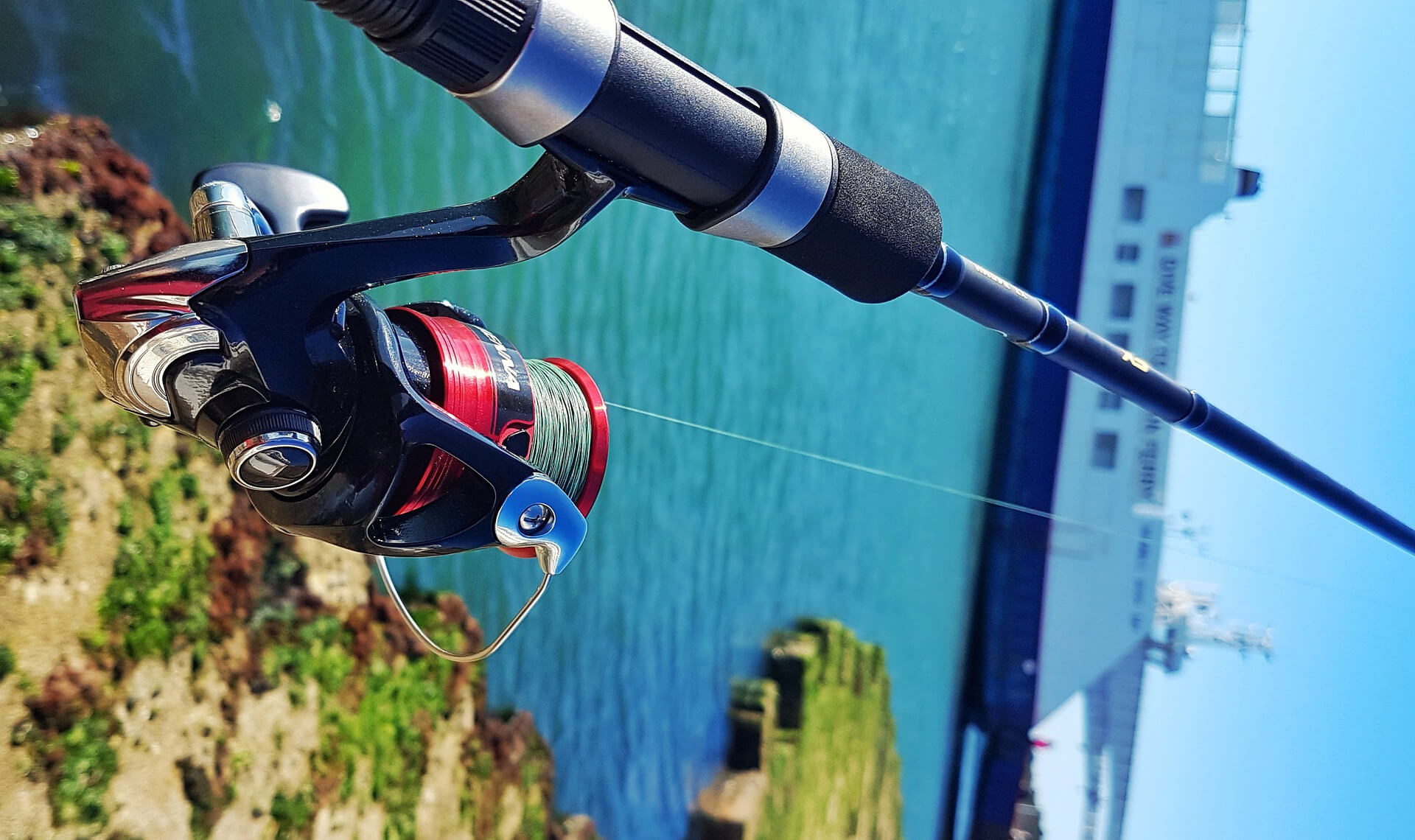
Features of Inertia Reels
Inertia reels are a classic of the fishing genre, mainly used for traditional bottom (not feeder) or fly fishing, or in tandem with float equipment. However, some spinners and feeders still prefer this old-school accessory. This is a matter of taste, although objectively a spinning rod for spinning and a feeder is much more convenient at all stages, from casting to playing fish .
The constructive solution of inertial reels does not provide for the presence of a line manager, therefore, the first task of the angler is to control the tension and direction of laying the line. The basic approach to winding remains the same as in the previous case: from the factory reel to the pencil through the ring to the reel. However, in this case, the angler grips the line between his fingers and guides it for even distribution on the spool. Both cruciform and simpler spiral styling are acceptable.
In this case, it is absolutely not worth winding the line until the reel is full (not to be confused with inertialess models!). In principle, an almost half-empty spool is acceptable – this has little effect on the comfort of fishing. But filling the coil to the sides is fraught with falling and tangling of the fishing line at the most crucial moments.
Baitcasting reel
Baitcasting reels represent a natural evolution of the good old inertia. In fact, these are winches that are distinguished by increased strength and lifting capacity at an expected large mass and an equally impressive price. It is used mainly in sea fishing, but sometimes it is also used for fresh water fishing, usually in tandem with a reinforced casting or trolling blank. The multiplier is purposefully sharpened for the extraction of trophy specimens.
Winding a fishing line on a multiplier has a number of features. First, there is a perforation in the spool. Its original purpose is to lighten the structure, but the holes available are also good for attaching the fishing line: you can simply tie it with a regular knot. There is no need to use backing: it is not at all necessary to fill the spool to the brim. The multiplier is already heavy, and incomplete winding will not affect its performance in any way.
The rest of the principles can be borrowed from the winding of the inertialess, but it must be borne in mind that in this case it is better to control the tension of the cord. This can be done with fingers protected with a glove or a piece of cloth, or you can use a cork cut to half for this purpose (a fishing line is passed through the cut).
In reels of this type, there is no clip for fixing the cord, therefore, in the final it is better to wind it on the foot for attaching to the rod.
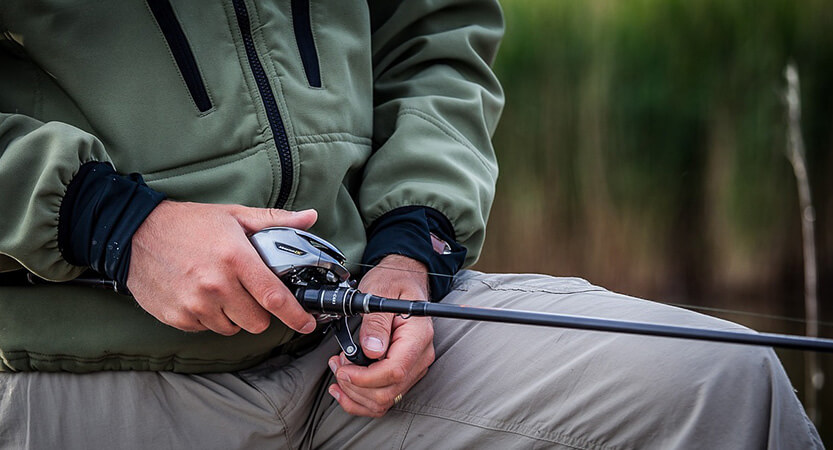
Practical advice from experienced anglers
Following a good tradition, experienced anglers give you practical advice at the end of the article:
- Purchase spools with several replacement spools included. This will make it easier both to wind the line in tandem with the backing, and to change the rig while fishing.
- Give preference to well-known brands and beware of counterfeit products. If you are offered a “branded” reel at a bargain price, it is unlikely that there will be a truly original product inside.
- Do not use cotton or other sewing thread for backing. They get wet and keep moisture for a long time, which negatively affects the safety of the line.
- Keep your line dry. After fishing, unwind the working part of the line, dry it thoroughly and wind it back up. Before the onset of the off-season, you should dry all the fishing line, after which you need to wind it loosely around the spool. It should be rewound with the correct tension before use.
- Buy a new cord for each season. The old line can be used as backing. But if finances do not allow such a luxury, you can wind the old cord in the opposite direction so that the least worn part acts as a working part.
We hope that our practical advice will help to improve the comfort of your fishing, increase your catches and make reasonable savings when purchasing accessories!

![The 10 Best Fishing Coolers in 2023 [Detailed Guide] 5 The 10 Best Fishing Coolers in 2023 [Detailed Guide]](https://trizily.com/wp-content/uploads/2022/03/best-fishing-coolers-768x768.jpg)
